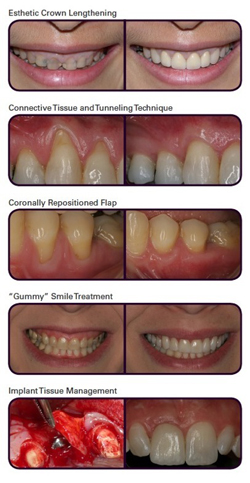Dr. Richard Richter’s 6 Tips to Achieving Success in Your Sleep Apnea Appliance Therapy
A guest post by MPSD/POS Instructor Dr. Richard Richter.
Have you ever made a beautifully fitting sleep apnea or snoring appliance only to find that the patient was unable to wear it because of TMJ pain?
Many of us entering this exciting and growing area of dental medicine encounter this barrier to success. As doctors trying to serve our patients, this can often frustrate our patients, our referring sleep physicians and ourselves.
Over the years I’ve worked with various patients and talented practitioners to refine how I diagnose and plan treatment in our sleep patients. I’ve discovered methods that make dental medicine treatment much more predictable and rewarding. I wanted to share 6 tips that I’ve learned to help other dentists who want to be more effective in appliance therapy.

The Dentist’s Quick Checklist for Successful Sleep Apnea Treatment:
- Carefully document the history of any previous TMJ symptoms. Before creating any sleep apnea appliance, do a thorough screening. Know what you’re getting into to avoid stressing your patient’s TMJ complex.
- Palpate the related TMJ muscles for tenderness. If you find discomfort during your palpation, this is a sign that your patient may not yet be able to tolerate sleep apnea appliance therapy without TMD treatment first.
- Have the patient go through protrusive and lateral excursions. Do you see signs of limitation, discomfort, or locking? Does the patient have to open and “crack their jaw “to continue speaking to you? If the answer is yes, you will likely need to address the TMD issues before starting sleep apnea appliance therapy.
- Have a sleep apnea team already assembled. Make sure you have a good sleep physician, pulmonologist, and ENT whom you can communicate with. Having a team available will enable you to give your patient a comprehensive exam and treatment quickly to maximize your chance for success.
- Check for any medical concerns. With your comprehensive screening, make sure that the patient gets a diagnosis of sleep apnea by ruling out other medical issues.
- Do a thorough orthodontic work up. Understanding the specific muscle types and occlusal disharmonies give you clues on what’s really going on with your patient. The orthodontic screening will help you determine what type of sleep, TMD and orthodontic therapies to design, plan and The little known tip can give you important knowledge to set your treatment up for long term success.
I implement these 6 tips when working with every sleep apnea patient. I hope that this guide will help you notice if there are warning signs in your potential sleep apnea patients. I hope that you too become successful in this exciting and vital treatment option for your patients.
Want to learn more about TMJ treatment and Sleep Apnea appliance therapy? Gain in depth guidance this fall in our Sleep Apnea & TMD course.
About the Author: Richard Richter, DMD, FAGD
Dr. Richard Richter lectures extensively within dentistry on topics of Sleep Apnea, TMJ, Laser Dental Surgery, Laser Restorative Dentistry, Dental Technology, Oral Cancer, and Orthodontics. He is a tenured international lecturer teaching Orthodontics with Progressive Orthodontic Seminars. Dr. Richter currently runs two private practices in New York and has been one of the early pioneers in most of the latest technologies enjoyed today in dentistry.
One Response to “Dr. Richard Richter’s 6 Tips to Achieving Success in Your Sleep Apnea Appliance Therapy”
Individual Courses
- 2025 Update | Pre-Restorative Orthodontics
- Selective Orthodontics Series
- Adult Orthodontics
- Progressive Aligners
- Assistant & Team Orthodontic Training
- FREE Introduction to Orthodontics
- Gummy Smiles
- Maximizing Your Ortho Business [Online Class]
- Orthodontic Case Finishing
- Orthodontics for Children
- Orthodontic Mechanics
- Essentials of TMD and Botox® in Dentistry
- 21st Century TMD Protocols
- Ultimate Triad







Thanks for this very educational blog post! In order to keep teeth from clenching and grinding at night, people wear a night guard, which is also known as a mouthguard. One-size-fits-all night guards are common, but there are also a variety of models available in various sizes. It is advisable to select the one that best meets your requirements.
For example, the one-size-fits-all sleep apnea mouth guard is comprised of soft, flexible material. It’s designed to aid those with mild sleep apnea who have delicate upper jaw tissue. If you have an overbite or underbite, it can be helpful, but if you have a high arch palate, it may not be the best option.